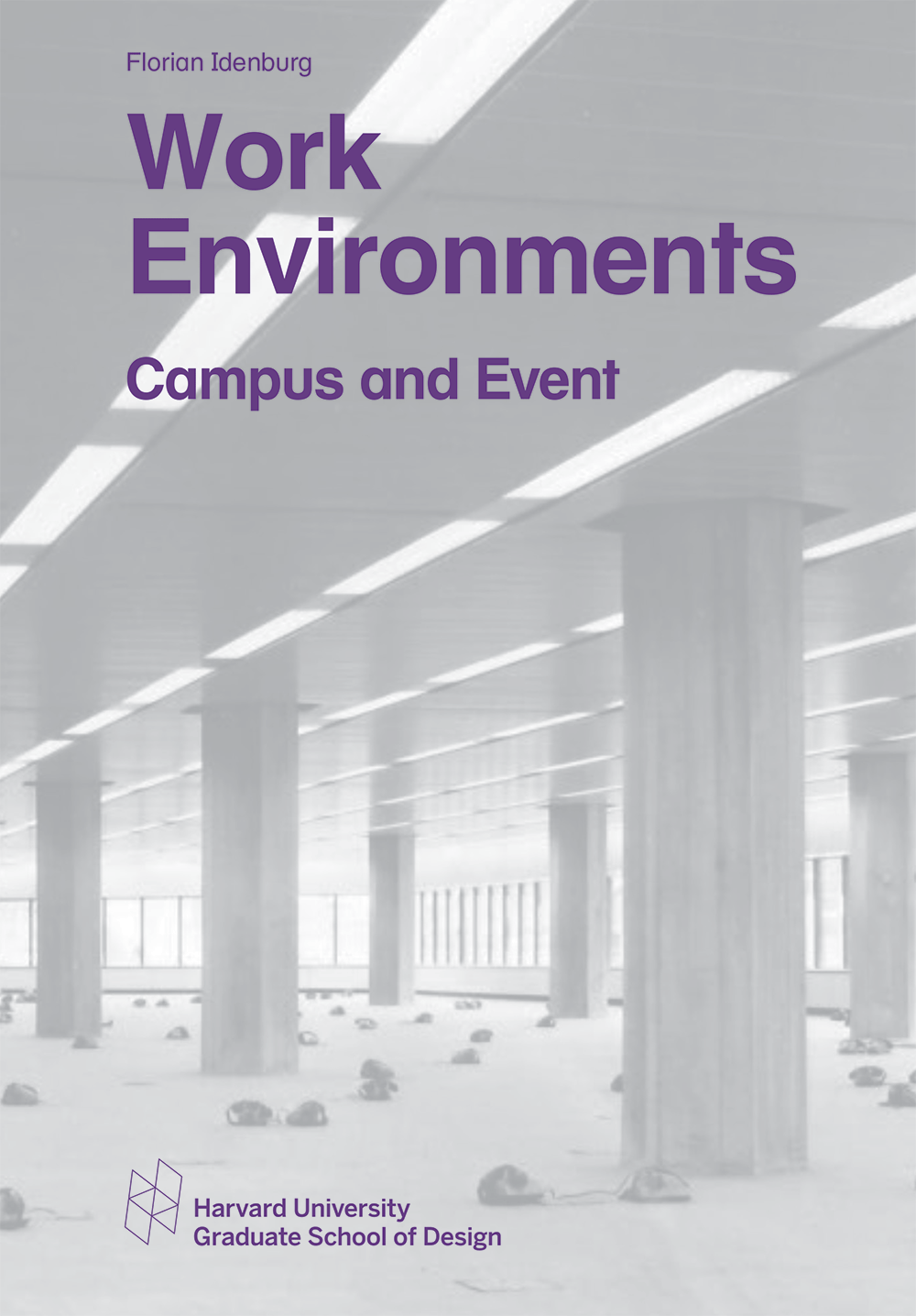Work Environments 1: Campus and Event
This studio is the first out of three studios that examines, through research and design, the disruptive transformations that take place globally in environments where work takes place. This edition looks at the US, and explores two interrelated domains of work, namely the corporate campus and the industry event.
Work Environments
A company – an enterprise growing through input of workers’ energy, knowledge and time – tries to employ the best possible people and have them be as productive as feasible at a most efficient cost. In a system that continuously forces companies to increase profits, the perpetual quest to optimize the workforce is an essential activity. In this equation, the workplace is a key component. A well conceived work environment could reduce costs, through optimization, and increase productivity, through comfort. Many components that define this environment are quantifiable, but since a workforce is made up of human beings, individual sensitivities, such as comfort, pleasure and convenience are also part of this equilibrium. Over the course of history, work has shaped urban and architectural typologies – the business district / office tower with its ‘typical plan’ as obvious example – and the discipline gradually has assembled a large body of knowledge. Yet, more than domestic space, the work environment is prone to be affected by technological and societal change, putting its status in permanent flux.
This studio examines two sites in our work environment: the corporate campus and the industry wide event.
The Campus
In postwar America, the automobile and cheap land allowed companies to relocate in areas of relative isolation, where workers could produce value in a controlled environment. Suburban campuses spread out over the country, build specifically around certain industries and processes. A corporate campus offers comfort, focus, wellbeing and control. Changes in the character of work and demographic preferences are putting the campus model into question. Many once highly productive suburban campuses are left abandoned, as new generations choose to live in cities and companies move back downtown. In the meantime new campuses are being build all over the country. What factors affect these opposing dynamics? Can we imagine a more entropic and resilient version of this labor utopia?
The Event
Rather than making physical gatherings obsolete, hyper connectivity has led to a dramatic proliferation of industry wide events, conferences, exhibitions, festivals etc. Industries are transforming from location specific to event specific, a good example being the art world. The convention industry is one of the fastest growing industries, and a lifeline for cities as Atlanta, Las Vegas, and New Orleans. At these temporary gatherings, deals are made, products launched, ideas generated, connections established. This development has transformed the desk bound worker to a worker-nomad in a vectorial labor continuum. A seamless universe of lounges, lobbies, lecture halls, breakout rooms and touchdown benches, where one roams from hotspot to charging station, from vending machine to valet. What is the landscape of work beyond the office? Will it eventually make the static office obsolete?
This studio examines these new environments and their conceptual and ideological origins. Research will range in scale from campus via chair to charger, and undertake a rethink and redesign that responds to the now and near future. The studio will tentatively travel to a site in Austin TX – an abandoned corporate campus awaiting reimaginng – and attend SXSW. Support, both conceptual and financial, is provided by Knoll.
Publications
-

Work Environments: Campus and Event
Florian Idenburg, Instructor
November 2015